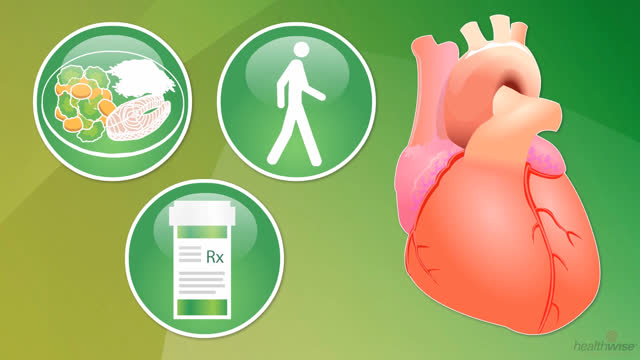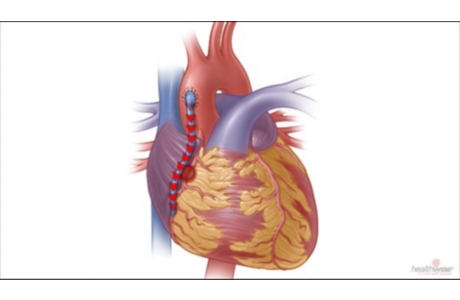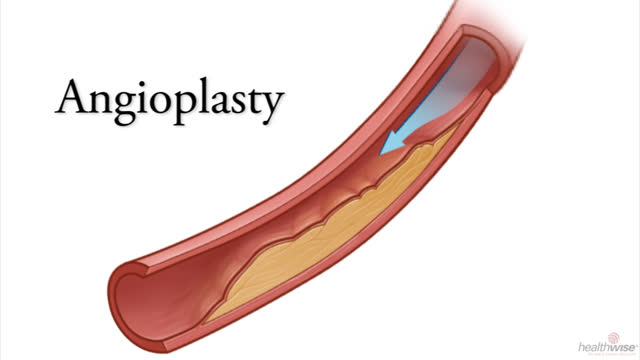Coronary Artery Bypass Surgery: Minimally Invasive Methods
Topic Overview
Standard coronary artery bypass graft (CABG) surgery works very well to improve blood flow to the heart. But the procedure is very invasive to your body for two major reasons.
- It involves making a large cut in your chest to expose your heart and arteries.
- It requires stopping your heart and connecting you to a heart-lung bypass machine. The machine takes over the work of your heart and lungs.
Because it is so invasive, the procedure can cause several complications. Surgeons have devised several new methods that are less invasive. But minimally invasive CABG surgery is not available everywhere. And this surgery is not right for everyone.
Beating-heart surgery
Beating-heart surgery is different from the standard CABG surgery. During a standard CABG procedure, your heart will be stopped and you will be connected to a heart-lung bypass machine. Beating-heart surgery (BHS) is unique. That’s because the procedure is performed while your heart is still beating. You don’t need the heart-lung bypass machine.
There are two main types of beating-heart surgery (BHS). (Both are types of minimally invasive CABG surgery.)
- Minimally invasive direct coronary artery bypass (MIDCAB)
- Off-pump coronary artery bypass (OPCAB)
MIDCAB
MIDCAB surgery differs from traditional CABG surgery in two ways. First, MIDCAB does not use the heart-lung bypass machine. Second, your surgeon will cut several small incisions in your chest to access your coronary arteries. These small cuts are called thoracotomies. They are used instead of the one large incision (sternotomy) used in traditional CABG surgery. These smaller cuts expose only the sections of your arteries that require grafts. They don’t expose your whole heart. This means you have a lower risk of infection. You also do not have a large scar like you would have with traditional CABG surgery.
The main disadvantage of MIDCAB is that it can’t be used to treat several diseased vessels. This is especially true if arteries on both the left and right sides of the heart are affected. The limited number of small incisions made using MIDCAB makes it hard to treat more than two coronary arteries during the same surgery.
OPCAB
The off-pump coronary artery bypass (OPCAB) technique is another type of beating-heart surgery. It requires one large incision. like traditional CABG surgery. But with OPCAB, you don’t need a heart-lung bypass machine. And this surgery may not require manipulation of the aorta.
Is this surgery right for you?
You and your doctor can discuss whether minimally invasive CABG surgery is a good choice for you. The decision depends on your overall health, how bad your coronary artery disease is, how many bypasses need to be created, and some other things. If you choose to have the surgery, it is important to ask how experienced your cardiac surgeon is in doing these types of surgery.
There are pros and cons to the various types of minimally invasive CABG surgeries. With information and communication, you and your doctor can make the right decision about which CABG procedure is best for you.
References
Other Works Consulted
- Hillis LD, et al. 2011 ACCF/AHA Guideline for coronary artery bypass graft surgery: A report of the American College of Cardiology Foundation/American Heart Association Task Force on Practice Guidelines. Circulation, 124(23): e652–e735.
- Sabik JF, et al. (2011). Coronary bypass surgery. In V Fuster et al., eds., Hurst’s The Heart, 13th ed., vol. 2, pp. 1490–1503. New York: McGraw-Hill.
Current as of: April 9, 2019
Author: Healthwise Staff
Medical Review:Rakesh K. Pai, MD – Cardiology, Electrophysiology & Martin J. Gabica, MD – Family Medicine & E. Gregory Thompson, MD – Internal Medicine & Adam Husney, MD – Family Medicine & David C. Stuesse, MD – Cardiac and Thoracic Surgery
This information does not replace the advice of a doctor. Healthwise, Incorporated, disclaims any warranty or liability for your use of this information. Your use of this information means that you agree to the Terms of Use. Learn how we develop our content.






